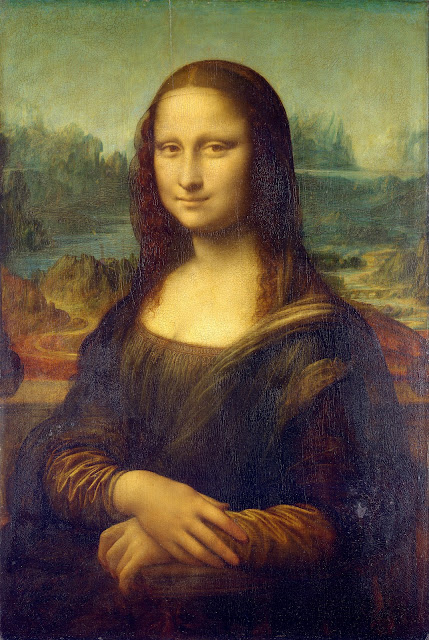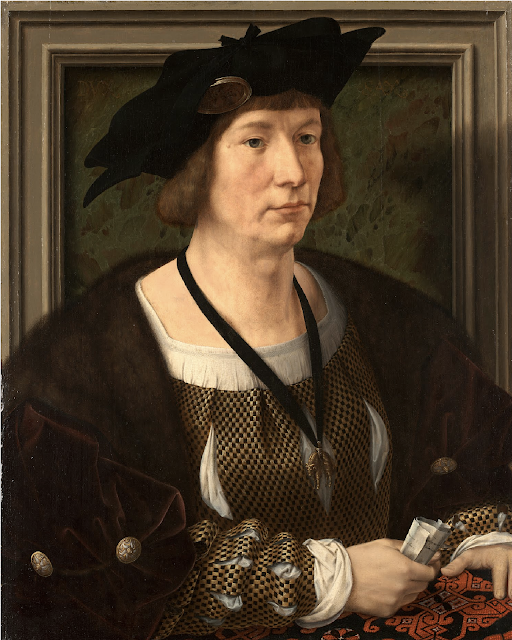Let’s end this month of portraits with the most famous and most sung about and certainly most visited in the world.
In fact if you ever plan to visit the Louvre and have a good look at the painting, don’t get your hopes up too much.
Here’s a photo I took the last time we went to Paris (2009).
At the front row you can see a woman with auburn hair and a boy with glasses, these are my wife and son.
This was on a weekday shortly after opening.
Leonardo da Vinci(1452 - 1519)
Leonardo di ser Piero da Vinci was an Italian polymath of the High Renaissance who was active as a painter, draughtsman, engineer, scientist, theorist, sculptor, and architect. While his fame initially rested on his achievements as a painter, he has also become known for his notebooks, in which he made drawings and notes on a variety of subjects, including anatomy, astronomy, botany, cartography, painting, and palaeontology. Leonardo is widely regarded to have been a genius who epitomised the Renaissance humanist ideal, and his collective works comprise a contribution to later generations of artists matched only by that of his younger contemporary Michelangelo.
Mona Lisa (Gioconda)
c. 1503–1506, perhaps continuing until c. 1517
Oil on poplar panel
77 cm × 53 cm
The Louvre, Paris
The painting has been traditionally considered to depict the Italian noblewoman Lisa del Giocondo.
It is painted in oil on a white poplar panel.
Leonardo never gave the painting to the Giocondo family. It was believed to have been painted between 1503 and 1506; however, Leonardo may have continued working on it as late as 1517.
King Francis I of France acquired the Mona Lisa after Leonardo's death in 1519, and it is now the property of the French Republic.
It has normally been on display at the Louvre in Paris since 1797.
https://en.wikipedia.org/wiki/Mona_Lisa




.jpg)







1929.png)

1916.png)

%201938.png)








%20and%20his%20Brother%20John%20Gulston%20(1750-1764)%201754.png)






.png)


%20.jpg)